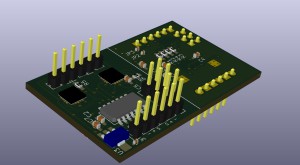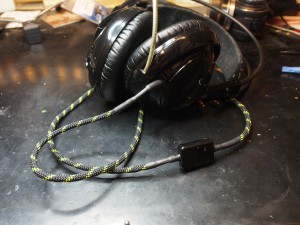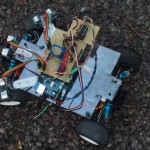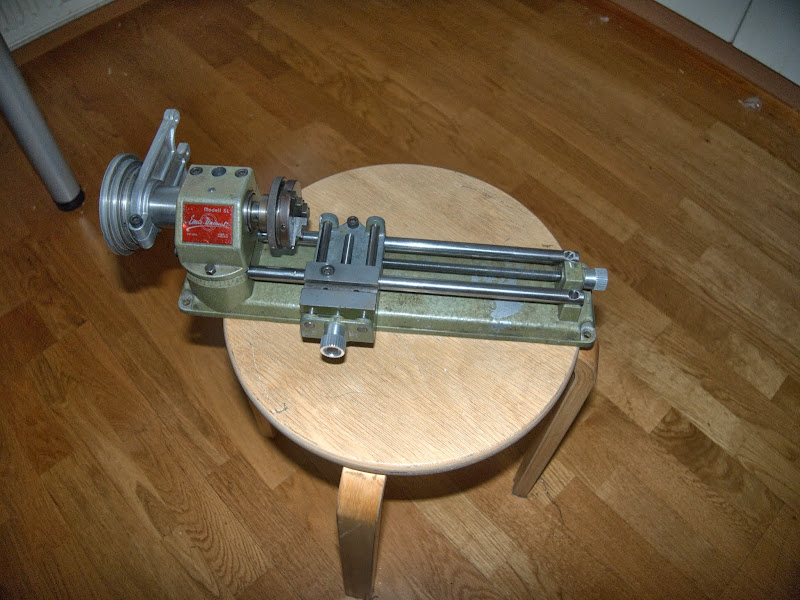For few times I had a situation where I would have liked a way of changing register values in Atmel studio simulator without having to pause the simulation. So I looked into it and found the useful, but overlooked stimulifile. Probably this feature is overlooked by most hobbyist because it’s easier to use real board to debug than to use the time to write a stimulifile for the situation. Anyway I decided to get into this a bit and write a small program to make simple stimulifiles.
3A combat robot speed controller pcb
Rigol Screen Grab software
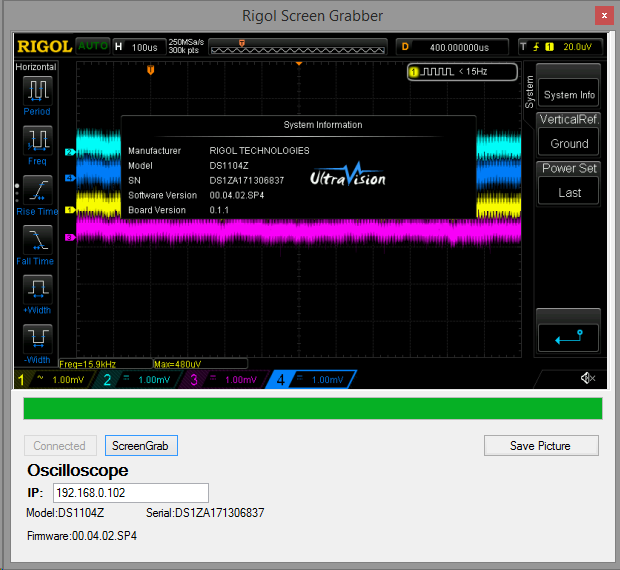 I got a new oscilloscope a Rigol DS1054Z. This scope has Ethernet connection for remote operation. From this connection you can even get a screen capture of the scope without any drivers. I found that someone had made a python script for this operation and thought it would be nice to have a Windows software to do it directly so I made one.
I got a new oscilloscope a Rigol DS1054Z. This scope has Ethernet connection for remote operation. From this connection you can even get a screen capture of the scope without any drivers. I found that someone had made a python script for this operation and thought it would be nice to have a Windows software to do it directly so I made one.
Steelseries Siberia V2 sleeving
I decided to sleeve my headset because the cabel constantly tangled. This post can also be used as a “how to” for headset sleeving.
Wireless fire alarm hacking
When I was at the stores I saw a package that had two fire alarms inside of it. This wouldn’t be anything special if they weren’t wireless. I decided on the spot that it would be awesome to attach them to raspberry pi for remote alarm detection. So the next problem was how to get the data out of them. Continue reading
Autonomous car part 1
Two years ago I decided to build an autonomous RC car. There were two main reasons I wanted to build an autonomous RC car, first I wanted to use an RTOS core I made in school, second reason was because I wanted to build an autonomous vehicle/robot.
I ordered a small 1/18th scale RC car to be the platform. The reason I chose an RC car to be the platform was because it has motor speed control electronics already built in. As the vehicles brains I selected Arduino Mega 2560. It has 256 kB of program memory and 8 kB of variable memory.
For the vehicles eyes I selected the well used and cheap HC-SR04 ultrasonic sensors. These sensors are controlled by giving a roughly a 10 uS pulse to the trigger pin. After that the sensor measures the distance and sends a pulse back with the echo pin, and the width of the pulse is proportional to the distance.
I wanted to check all the sensors with only five pins. One for trigger control, one for echo and three for sensor address. First I decided to use 74HC238 3 to 8 decoder to control the trigger and 74HC151 digital multiplexer to control the echo.Both of these would be driven with the same address pins. Next I thought only using diodes at the echo line so I could get away with only one IC. I tried this but it didn’t work mostly because of the diode voltage drop and higher resistance. After this next idea was to directly wire the sensors echo pin to the input capture pin, surprisingly it didn’t work either because how the sensors are wired. So finally I wen’t back to the original plan of using two IC’s this worked nicely.
Valve controller Hardware part
This is a write up about a three way valve controller I decided to build. Project started when we had a Nibe air to water heat pump installed. We left our old oil based system more or less intact, in case it was needed when the temperature got too low for the Nibe. We also made a connection from the oil boiler to the Nibe so we could use it as a external heating system. Nibe has a maximum input temperature of 65 degrees Celsius. So we needed a controller to control the water temperature. First we installed a commercial solution, but for some reason it didn’t close the valve when the maximum temperature of 55 was reached. One solution would of been reverse engineer and fix the controller, but wheres the fun in that. So I decided to build my own.
CNC Lathe part 1
Soldering wires to connectors
First post
Welcome to my blog. Main reason for this blog is for me to keep track of my teardowns and projects. Hopefully someone else will also have some use for this blog.
So we’ll see what will happen.

